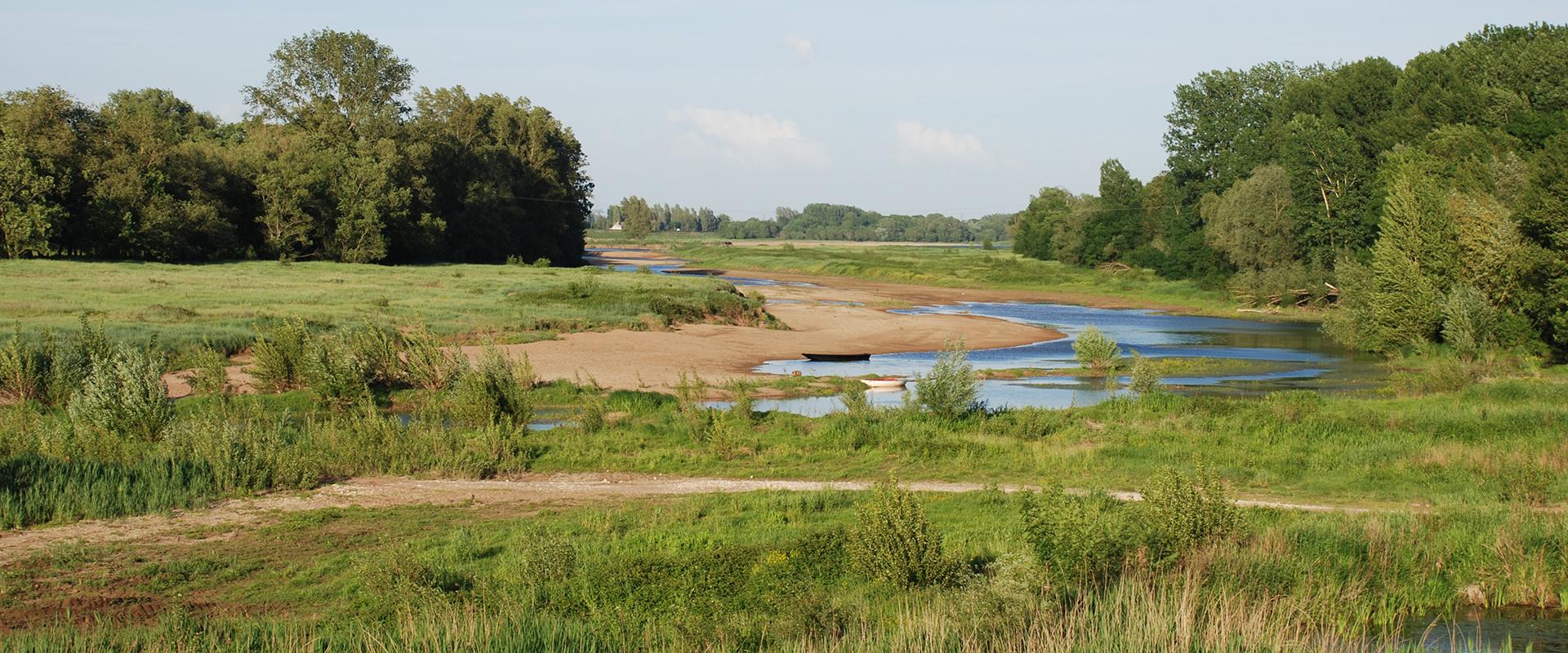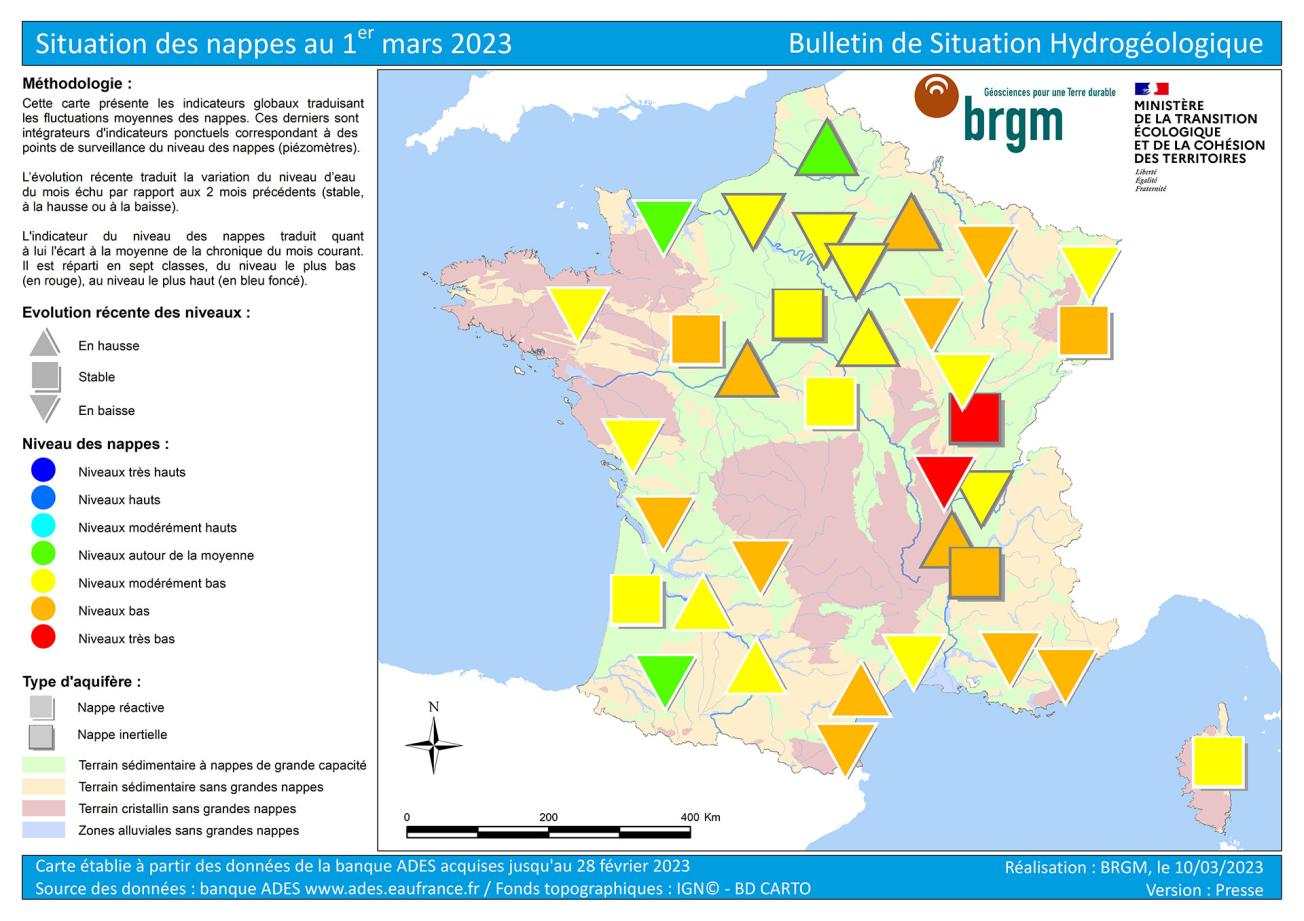
Map of France of the situation of aquifers on 1 March 2023.
© BRGM
Hydrogeological situation on 1 March 2023
The lack of effective rainfall during February led to a reversal of trends, with falling levels for half of the aquifers. Reactive-aquifer levels, which are sensitive to the lack of rainfall, are generally dropping. The trends for inertial aquifers are more contrasted. The 2022-2023 recharge is still inadequate.
As a result, the groundwater situation has deteriorated and is unsatisfactory. Indeed, far too little rainfall infiltrated during the autumn to compensate for deficits that had accumulated during 2022 or to stabilise aquifer levels. As a result, aquifer levels remain below monthly norms, with 80% having moderately low to very low levels. The levels for most sectors were significantly lower than in February of last year.
In March and until vegetation starts to grow again, changes in trends will depend mainly on rainfall. The recharge could resume in March in areas with a lot of rainfall, meaning the situation might then improve. If there is insufficient rainfall, the depletion could continue in the reactive aquifers and even affect the inertial aquifers. In this case, the state of the aquifers would continue to deteriorate.
For the next few months, the 2022-2023 recharge deficit is likely to affect all the inertial aquifers in the Paris Basin and more particularly those in the Rhône-Saône corridor. As regards reactive aquifers, abundant rainfall lasting through spring might enable satisfactory levels to be restored. However, it is difficult to envisage the replenishment of stocks between now and spring in reactive aquifers with very low levels.
Groundwater trends
The 2022-2023 recharge period started one to two months later than normal. In the autumn of 2022, the proportion of rainfall that infiltrated deep into the ground remained low, due to very dry soils and late emergence of active vegetation. Rainfall then remained deficient over a large part of France. In December 2022 and January 2023, recharging continued with levels generally increasing. February was marked by a considerable lack of effective rainfall. The trends have been reversed and are globally decreasing but they remain heterogeneous because they depend on the reactivity of the aquifers.
In reactive aquifers, the lack of significant rainfall leads to rapid reactions. In February, the trends in most of the reactive aquifers were reversed and levels decreased again on the whole. However, the inflow (rain or snow) was sufficient to feed the alluvial aquifers of the Garonne and its tributaries and the alluvial aquifer of the Languedoc coast (Aude alluvial aquifer).
In the inertial aquifers of the Paris Basin and the Rhône-Saône corridor, the level trends were heterogeneous. The rainfall that has been filtering into the ground since the beginning of the autumn is moving very slowly through the unsaturated zone to reach these aquifers. The increases in the levels recorded in February were therefore due to the effective rainfall during the previous months. However, the recharge recorded since the autumn of 2022 remains very low or even non-existent in most of these inertial aquifers. Some piezometers in the centre of the Paris Basin did not record any recharge.
Situation in relation to February averages
Rainfall deficits recorded in the 2021-2022 hydrological year and intense abstraction of groundwater in the spring and summer of 2022 led to severely low levels in most aquifers. The situation during the autumn only developed very slowly. It improved in January, following the early winter recharges, before deteriorating sharply in February. Recharge episodes in the autumn and winter of 2022-2023 remained well below the level necessary to make up for the deficits accumulated during this last hydrological year. As a result, all aquifer levels remain below normal with 80% of levels being moderately low to very low.
Concerning the reactive aquifers, the rainfall recorded at the end of December 2022 and in January 2023 enabled levels comparable to or above normal in many areas. However, the lack of rain in February caused a sharp deterioration in the situation, cancelling out the effect of the January recharge episodes. In February, reactive aquifer levels were generally lower than normal for the month, ranging from moderately low to low.
As regards the inertial aquifers in the north of France and in the Rhône-Saône corridor, the situation has not changed much since the beginning of autumn. It is even deteriorating very slowly in areas that have received little or no rainfall. The levels remain unsatisfactory, from moderately low to low.
The situation was positive for several aquifers, with levels close to normal, compared to February levels for previous years:
- The inertial chalk aquifer in the Artois-Picardy basin benefited from significant effective rainfall in November 2022, leading to an improvement in the situation in January 2023;
- The aquifer levels in the Jurassic limestone of the Bessin remain comparable to monthly norms, thanks to the rainfall at the end of December and beginning of January;
- The alluvial aquifers of the Adour and Gave de Pau, whose situation deteriorated in February, remained comparable to monthly norms thanks to the significant recharge episodes in January.
Many aquifers are in an unfavourable condition, with low or extremely low levels, compared to the mean of February levels in previous years:
- The inertial water tables of the plio-quaternary pebble formations of Burgundy-Franche-Comté and the reactive alluvial aquifers of the upstream Rhône and the downstream Saône have very low levels;
- The inertial aquifer of the Miocene molasse of the Bas-Dauphiné shows low to locally very low levels. The situation has been gradually deteriorating since the spring of 2022 and the 2022-2023 recharge is very weak;
- The Causses springs fed by the free karst limestone aquifers of the Middle and Upper Jurassic of Adour-Garonne have very low levels;
- The aquifers of the Roussillon multi-layer aquifer are experiencing an unprecedented situation since the introduction of management thresholds, with low to very low levels for a February.
Forecasts
The seasonal forecasts from Météo-France for the months of March, April and May do not suggest any particular scenario for rainfall. The most likely scenario for temperatures is that they will be higher than normal throughout France. Rising temperatures could allow an early regrowth of vegetation. The increase in evapotranspiration could then significantly limit the infiltration of rainfall within a few weeks.
If there is insufficient rainfall or early regrowth of vegetation, depletion could continue in the reactive aquifers and quickly affect all inertial aquifers. The state of the aquifers would then continue to deteriorate, slowly for the inertial aquifers and rapidly for the reactive aquifers. If the beginning of the depletion period is indeed confirmed, the recharge period will have been extremely short and inadequate. This could result in difficult situations as of the beginning of spring.
In March, recharge could nevertheless resume in areas with heavy rainfall. In order to recharge the aquifers, there will have to be enough to first moisten the soil and then to infiltrate deeply into the ground. In this case, the situation would improve in the reactive aquifers. However, it remains unlikely that groundwater reserves will be replenished between now and spring in reactive aquifers with very low levels. Even in the event of excess rainfall over the next few weeks, the state of the inertial aquifers in the Paris Basin and the Rhône-Saône corridor, weakened by two successive winter recharge deficits (2021-2022 and 2022-2023), is not expected to improve sufficiently to reach levels comparable to monthly norms.
From April onwards, recharge episodes will probably be occasional and not particularly intense, unless there are exceptional rainfall episodes. It should be noted that spring rains should postpone the start of the depletion period and avoid excessive abstraction of groundwater, particularly for irrigation.
Comparison of the situation between February 2022 and February 2023
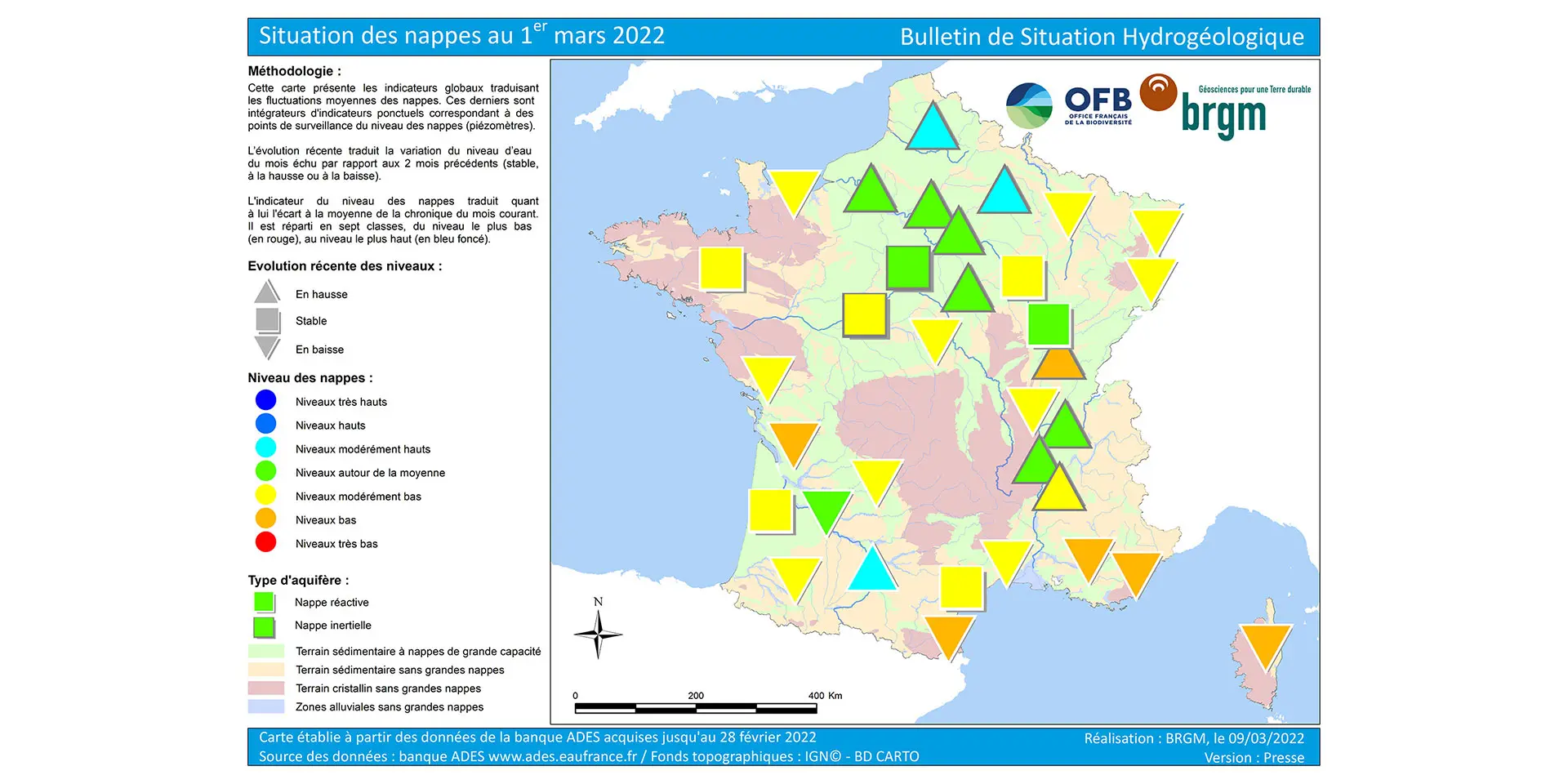
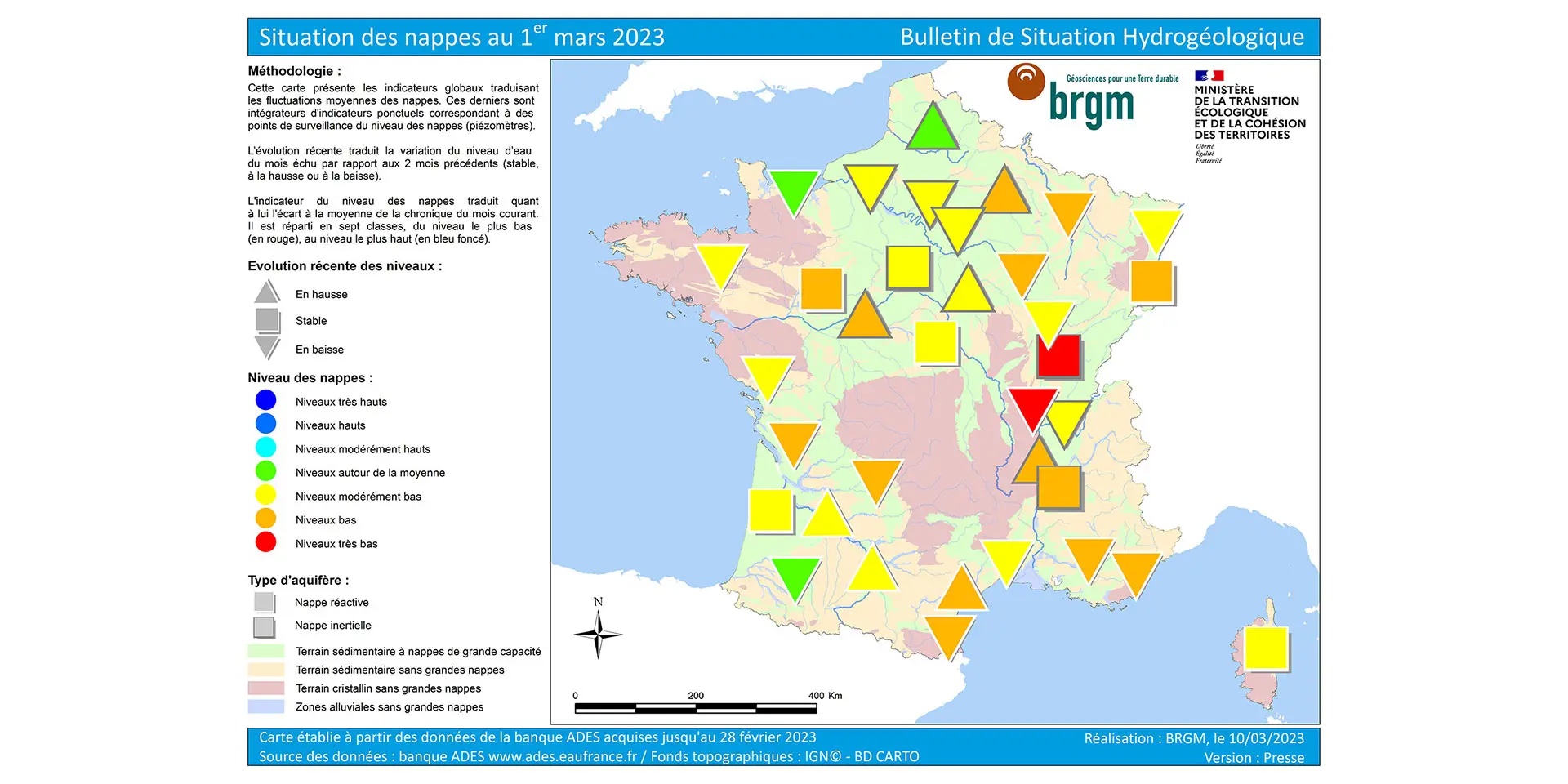
Map of France of the situation of aquifers on 1 March 2022 (left) and 1 March 2023 (right).
© BRGM
Evolution of the situation from 2022 to 2023
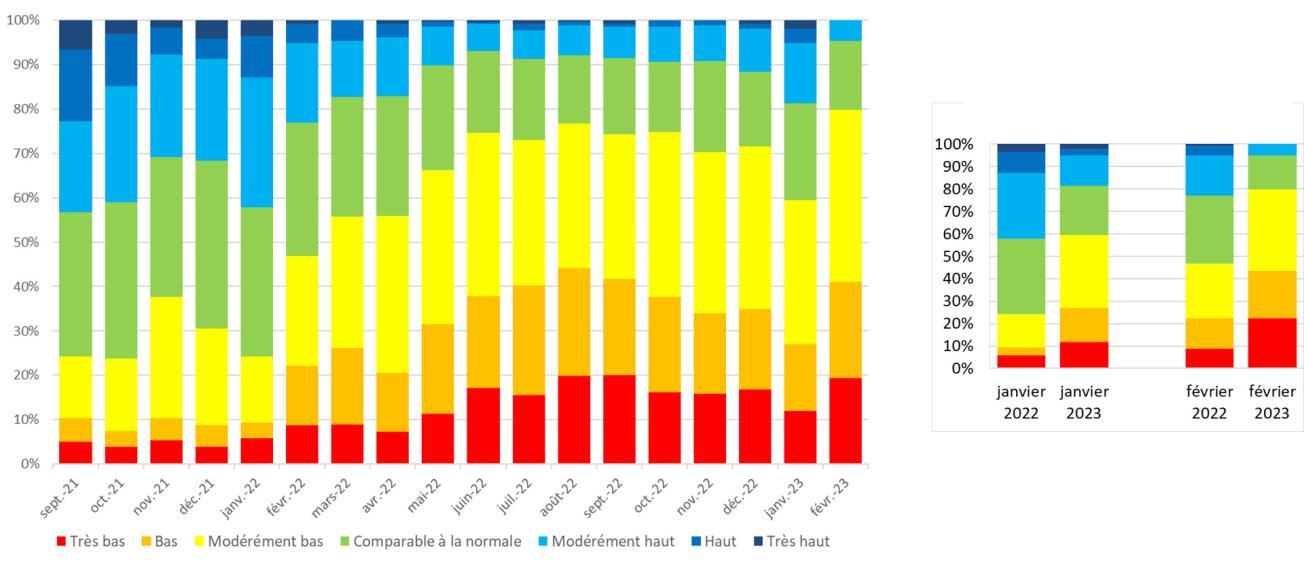
Evolution of groundwater levels: 2022-2023
© BRGM
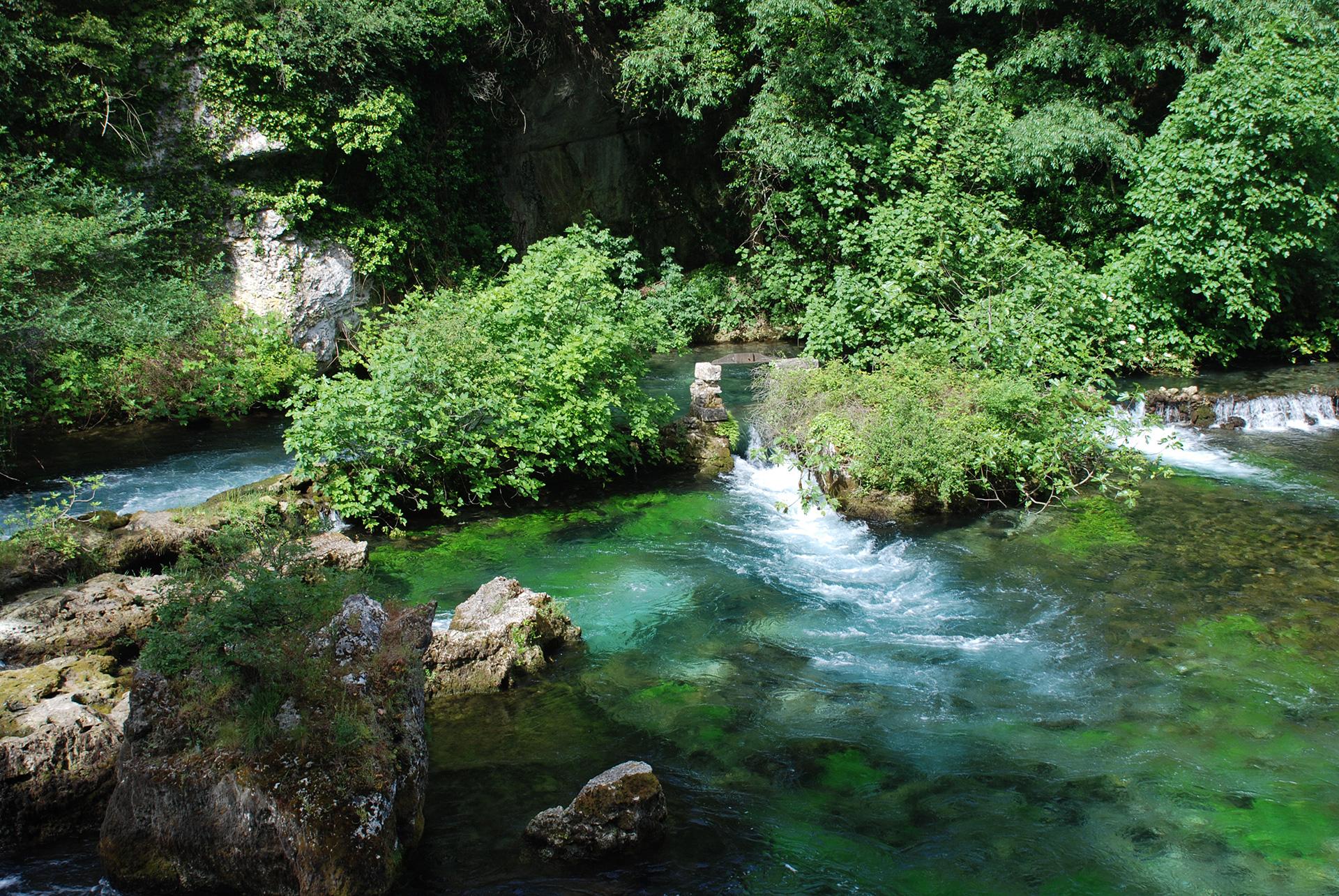
State of groundwater: monitoring by BRGM
Groundwater is a widely used resource: in metropolitan France, it accounts for nearly two-thirds of drinking water consumption and more than one-third of agricultural water consumption. It is also widely used in the industrial sector. Groundwater tables depend on cyclical recharges.
BRGM monitors groundwater levels and quality in mainland France. Discover the actions carried out by the French geological survey and the resources and databases available on groundwater in France.
Press contact


